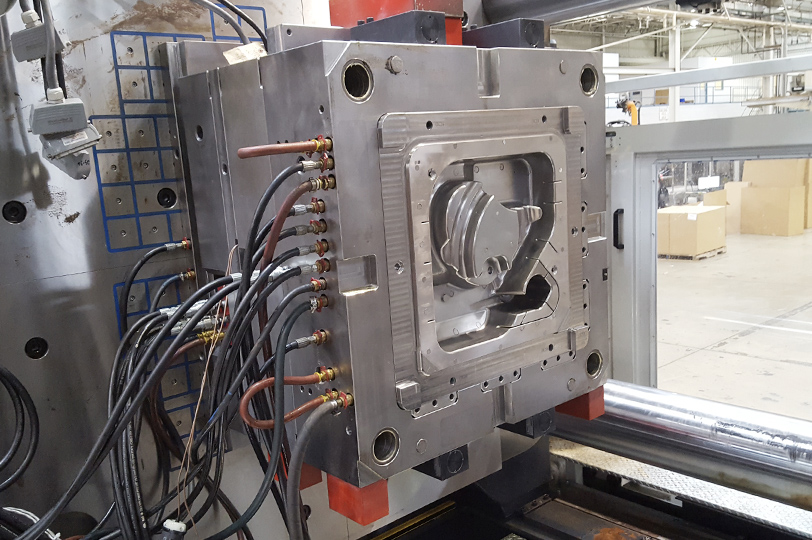Valuable insights and tips from Ferriot’s engineering experts
Making the decision to move injection molds from one supplier to another can be a daunting task, not for the faint of heart. The saying “the devil is in the details” is very apropos to the mold tool transferring process. If you don’t cover all the necessary details, you may be jumping from the frying pan into the fire. At Ferriot, we’ve identified seven key points you should consider before making a tool transfer, including everything from inventory to cosmetic standards. It takes communication, transparency, precision, and above all, experience. We hope these recommendations help you with a successful transition.
Before we proceed with our ShopTALK discussion, we recommend reviewing our whitepaper Mastering the Shift: 7 Key Points for Smooth Injection Molding Supplier Transitions. Our conversation with Jerry Graf and Amy Mathia will investigate some of these considerations.

Mold Transfer Consideration Talk
Jerry Graf is the Manager of Engineering. Previously, we spoke with Jerry about how mold flow analysis and tool design impact injection molded part quality. Discussing mold tool transfer considerations is a natural extension to that conversation.
Amy Mathia has been with Ferriot for over seven years as an Engineering Project Manager who works closely with the customers, our tooling engineers, and the production department on new product development. One of Amy’s main goals is ensuring projects are within budget, and her experience includes some rather challenging mold tool transfers.
Liz: In addition to the white paper that I mentioned earlier, how does Ferriot help customers feel comfortable that, when they transfer their mold to us, we can hit the ground running?
Jerry: We use a checklist, a guide for transferring tools. Engineering also has an internal checklist that we would go through upon receipt of the tool to ensure it is clean, properly maintained, and ready for our production floor. It’s very similar to the checklist we would go through when we receive a new tool we built or had built for us. With the checklist, a prospect can go down the list and say, “Yeah, okay, I’ve got all of this lined up, so I now can proceed with a higher degree of confidence.”
Liz: Why might a mold owner want to stay with their current supplier?
Amy: As we’ve learned about tooling problems, quality issues, and so on, we had to tell prospective customers, “Here are some of the headaches you’re going to have.” We don’t sugarcoat it because it can become expensive to correct these problems.
Jerry: And it can go both ways. Because on the saes side, we’re interested in earning more transfer business, but on the engineering side, it (often) creates many, many headaches for us. So, when talking to a potential customer about clear and obvious issues, we must ask them, “why would they want to do it? Is it worth it? Why should they not want to do it? What are the options?
Liz: So, it is important to know ALL the “why’s” when it comes to a pending transfer?
Jerry: Yes, that is one of the critical questions. Making sure we’re talking about some of the (possible) headaches, one of the key questions to ask when taking on a transfer tool is, “Why are you transferring it?” More often than not, it’s because they’re having trouble with it.
Liz: And what kind of trouble are they having?
Jerry: Frankly, if a customer transfers the trouble, that’s moving it to a different spot; it isn’t solving the problem. So, we need to have a frank, open, and honest discussion about what is wrong. Why are you (really) transferring it? Why do you want to transfer it?
Liz: After you find that out, do you ever say, “Well, you probably shouldn’t transfer because we may not have the answer for you.” Or do you confer amongst the engineers at Ferriot for a solution?
Jerry: After assessing the situation, once we know the problem or problems, we often tell them, “Well, yeah, we can help you with that. We can help resolve that situation. And here’s what getting this mold into the proper shape will cost.”
Another bad reason to move it is that the tool is old and worn out, and your current supplier can’t provide quality and can’t maintain production. But if the tool is old and worn out, neither can we. If there’s something wrong with the tools, that must be taken into consideration either before it’s transferred or as it’s being transferred.
Liz: What are some good reasons to do a mold tool transfer?
Jerry: A good reason for moving a tool would be you’re moving it for logistical reasons. For example, you’re getting it closer to where it needs to be from a manufacturing or distribution perspective, so you’re not shipping the finished product so far. Or you’re moving it to a supplier with superior capabilities to run the part.
Amy: To be perfectly honest, I’m not a big fan of transfer tooling. It’s okay to be blunt about it. Typically, the reason is it’s a problem somewhere else, and our customers want to move that problem. And when our biggest customers ask us if they can do that, we can’t say no. However, one of the best reasons I have heard of in my experience for moving tools to Ferriot would be the value-added things we can do here—for example, painting parts. If a mold owner has a part being molded by another supplier, and then they must send the parts somewhere else to get painted, additional costs are obviously involved. So, one good reason for transferring to Ferriot is that we also print and paint parts. Those are just two of the value-added things that we do. But in general, when someone is looking to transfer tooling, it’s a problem somewhere. Tools aren’t being moved because everything is running beautifully. It just doesn’t happen that way.
Liz: Yeah. Like Jerry said earlier, they’re just looking to move the problem and that’s not always a solution. However, we can work with them to find a solution.
Amy: Absolutely. Another thing that could be a good and a bad reason is capacity. Your current molder might not have the capacity, and you might find a molder that has the capacity and can speed up your lead times.
Jerry: Yes. That would be another good reason to move the tool. It is a reason that would not be necessarily problematic if you’re looking for a supplier that has additional capacity, additional capabilities of any sort, as Amy mentioned, finishing capabilities, capacity capabilities, maybe some processes that your current supplier doesn’t have because they’re more of a shoot-and-ship shop. And just trying to consolidate that all in one place. Those are reasonable reasons to want to move the tool.
Liz: With the recent increases in fuel costs, are you seeing people interested in transferring molds because of the shipping costs?
Jerry: Yes. We’re seeing customers bringing tools here from Asia because of the problems of getting parts across the ocean. They’re re-shoring some tools into North America.
In part two of this article, I’ll review addition tool transfer considerations as well as a few mold tool transfer success stories with our team of experts. We will discuss some challenges that we faced with our customers, how we addressed those challenges, and the end results that Ferriot’s solutions delivered.
Learn more:
- ShopTALK: Mold Tool Transfer Considerations Everyone Should Know – Part 2
- Is it Time to Break Up with Your Custom Injection Molder?
- Are you ready for your mold transfer? [Tool Transfer Success Checklist]




